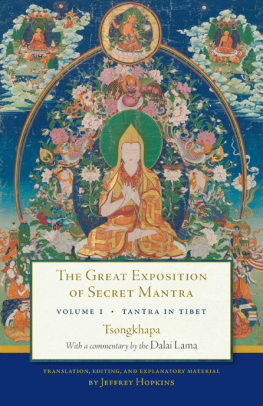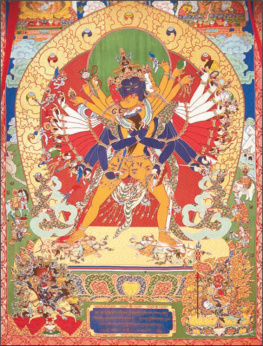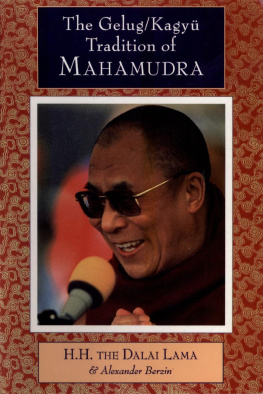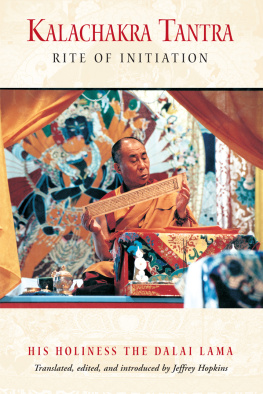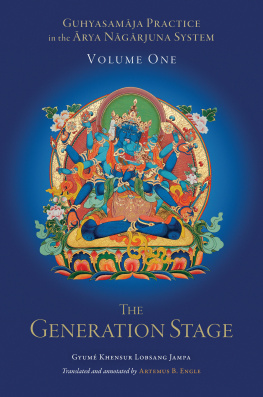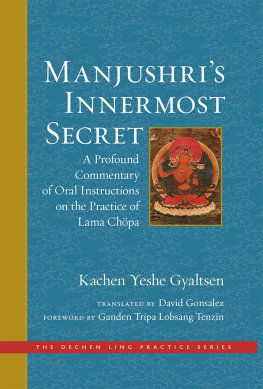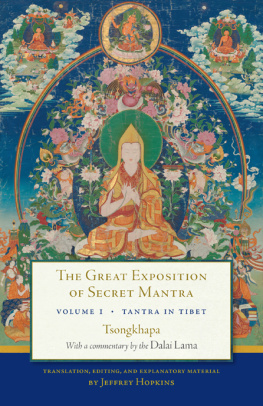Studies in Indian and Tibetan Buddhism
This series was conceived to provide a forum for publishing outstanding new contributions to scholarship on Indian and Tibetan Buddhism and also to make accessible seminal research not widely known outside a narrow specialist audience, including translations of appropriate monographs and collections of articles from other languages. The series strives to shed light on the Indic Buddhist traditions by exposing them to historical-critical inquiry, illuminating through contextualization and analysis these traditions unique heritage and the significance of their contribution to the worlds religious and philosophical achievements.
Members of the Editorial Board:
Tom Tillemans (co-chair), Emeritus, University of Lausanne
Jos Cabezn (co-chair), University of California, Santa Barbara
Georges Dreyfus, Williams College, Massachusetts
Janet Gyatso, Harvard University
Paul Harrison, Stanford University
Toni Huber, Humboldt University, Berlin
Shoryu Katsura, Ryukoku University, Kyoto
Thupten Jinpa Langri, Institute of Tibetan Classics, Montreal
Frank Reynolds, Emeritus, University of Chicago
Cristina Scherrer-Schaub, University of Lausanne
Ernst Steinkellner, Emeritus, University of Vienna
Leonard van der Kuijp, Harvard University

Just to state two reasons why this work should be read by all those aspiring to pursue the yoga practices of tantric Buddhism: First, in her introduction Yael Bentor has provided one of the clearest and best explanations of the exclusive technique of Unexcelled Mantra by which wisdom and method are combined within a single cognition. This fundamental practice is the very essence of Unexcelled Mantra. Second, in these times of fascination for high tantric practices, especially those of the completion stage, it is refreshing, and indeed necessary, to see a highly competent translation of the prerequisite creation stage, delivered with the academic professionalism and the high-level scholarship of Professor Bentor.
G AVIN K ILTY , translator, the Library of Tibetan Classics
This translation of the Panchen Rinpoches seventeenth-century condensed exposition of the creation stage in meditative practice, following the foundational Guhyasamja Tantra, is a great gift to scholars of Tibetan Buddhist thought and practice. Lucidly translated and superbly annotated, it provides a detailed account of the stages in which a practitioner dissolves ordinary reality into emptiness, out of which an identification with divine beings can be achieved through disciplined visualization. This book should fascinate not only specialists but also philosophers of consciousness and the mind, since the medieval Tibetan schools offer by far the most far-reaching and daring experiments with mental processes in the history of human civilization.
D AVID S HULMAN , Professor Emeritus, Hebrew University
The Guhyasamja is a fundamental tantra in Tibetan Buddhism. Yael Bentors translation of the commentary written by the first Panchen Lama, Losang Chkyi Gyaltsen, is a brilliant piece of scholarship, the fruit of intensive study of Tibetan tantric ritual and meditation. The translation is rendered with exemplary clarity and a readable style that does full justice to the intellectual sophistication both of the Tibetan author and his translator. The Essence of the Ocean of Attainments will therefore delight anyone who wishes to explore Tibetan interpretations of Indian Buddhist tantric practice.
P ER K VRNE , professor emeritus, University of Oslo
Acknowledgments
I WOULD LIKE to thank my teacher Professor Thubten Jigmey Norbu, who first introduced me to the clear and lucid writings of the Panchen Rinpoch Losang Chkyi Gyaltsen (Blo bzang chos kyi rgyal mtshan). His Essence of the Ocean of Attainments is no exception, but since the subject matter is quite complex, I am exceedingly grateful to the people who assisted me in my work on this book. First of all, thanks are due to Professor Penpa Dorjee, the coauthor, for making our joint effort such a great pleasure and for his immense patience. I am thankful also to my husband, Dan Martin, for his numerous valuable suggestions. I thank the late E. Gene Smith for always keeping an eye out for the publications by the prvapakins mentioned in this book. I am grateful to Dr. Thubten Jinpa for clarifying plenty of obscure points and to Geshe Thubten Tendhar, who contributed from his rich experience in both Namgyal and Sera Je monasteries. I thank also Jado (Bya do) Rinpoch and Geshe Thubten Tashi for explaining details in visualizing the three-dimensional mandala. I am grateful to Betsy Rosenberg, who, evidently inspired by the Panchen Rinpoch himself, has made the English style of the book so clear and smooth.
The Tibetan text was translated into English jointly with Professor Penpa Dorjee. However, I am solely responsible for any mistakes that might be found in my editing of the translation, in the notes, and in the introduction.
Yael Bentor
Jerusalem, March 2018
Introduction
T HE ULTIMATE GOAL of Buddhism is liberation. Tantric Buddhism shares this goal, aiming at the release from bondage to sasra and the attainment of enlightenment. The tantric path of the Unexcelled Mantra, Its author is the Panchen Rinpoch, Losang Chkyi Gyaltsen (Blo bzang chos kyi rgyal mtshan, 15701662), an illustrious Tibetan lama who was the teacher of the Fifth Dalai Lama and an abbot of Tashi Lhnpo monastery (Bkra shis lhun po). Among his important contributions to the Geluk school were his summaries of longer works by its founding fathers. Whether the Panchen Rinpoch contributed his own understandings is a subject for further research.
The Guhyasamja in the title of our English translation is in Tibetan the Gsang ba dus pa, an early tantra that came to be known as one of the unexcelled tantras in Tibet. though in later times it was widespread mainly among the Gelukpa (Dge lugs pa). It is a living tradition, and in our time the Fourteenth Dalai Lama confers its initiation almost every year.
One reason for the importance of the Guhyasamja Tantra in Tibet, especially for the Geluk tradition, is its remarkable hermeneutic systemsdhanas were written not only by Indian gurus but also by Tibetan lamas. It is not surprising, then, that the interpretive freedom provided by the hermeneutic tradition of the Guhyasamja was extensively exercised in Tibet.
The period around the middle of the second millennium was important for the systematization of Buddhist thought and practice in Tibet, and especially for the crystallization of tantric traditions. A number of Tibetan polymaths, including Tsongkhapa and Ngorchen, strove to formulate coherent systems, but since a total harmonization of all available scriptures and exegeses is absolutely impossible, they were required to make their own choices and thus to distance themselves from the methods of several of their Indian and Tibetan predecessors. Moreover, by making different choices, they created comprehensive and harmonious systems in and of themselves that nevertheless were dissimilar to other such formulations created by their compatriots. The author of the present book, the Panchen Rinpoch Losang Chkyi Gyaltsen of the Geluk school, followed for the most part the systematized presentation offered by Tsongkhapa, the founder of his school, hence we will focus on this tradition here.
Tsongkhapa studied the Guhyasamja Tantra and its practices with his Sakya, Kagy, and Buluk
The Essence of the Ocean of Attainments
Next page

